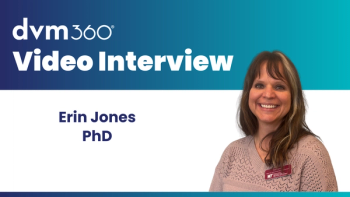
Editors' Note: Keep reading
That's Dr. Richard Bartels in the blue scrub top. Along with 26 other veterinarians, he attended one of the joint stabilization wet labs at this year's Central Veterinary Conference in Kansas City, Mo.
That's Dr. Richard Bartels in the blue scrub top. Along with 26 other veterinarians, he attended one of the joint stabilization wet labs at this year's Central Veterinary Conference in Kansas City, Mo. He's flanked by Dr. Mark Anderson, who, along with Dr. Darryl Millis, conducted the lab.
When Dr. Bartels nabbed another attendee to take this picture, I asked him what he was going to use it for. He said he planned to post it on the bulletin board at his practice, Bay View Veterinary Hospital in Panama City, Fla. That way, he said, his clients would see that while he was away he was training with, as he put it, "the best veterinary surgeons in the world."
What a great idea! Dr. Bartels is like most veterinarians—conscientious and caring and determined not to get complacent about their skills and competence. Wet labs, seminars, Web-based communities, and teleconferences are all fine ways to keep learning. Of course, our journal is another important source of continuing education. We, too, keep you up-to-date on what's new in veterinary medicine as well as refresh your memory on subjects you learned about in school. So if you think you already know everything about skin grafting and can forego reading this month's symposium, consider this: If you read the articles and discover you do know all those important facts, then that's great news! By reviewing this material, you've still reinforced your knowledge, probably recognized some things that you really had forgotten, and picked up some commonsense reminders. Case in point: In one of this month's articles, Dr. Karen Tobias and her fellow authors remind you that when making a pattern of a graft recipient site, you should mark the side of the pattern that faces away from the wound. That way, you won't incise a useless mirror image at the donor site.
Veterinarians have many ways they can train with the best. Dr. Bartels' clients—and yours—will get the message even if it doesn't appear on the bulletin board. They'll get it loud and clear when their pets receive the highest quality of care, whether it's a cruciate ligament repair or wound reconstruction. So keep learning, keep reading—after all, it's an oath all veterinarians have made.
Newsletter
From exam room tips to practice management insights, get trusted veterinary news delivered straight to your inbox—subscribe to dvm360.





